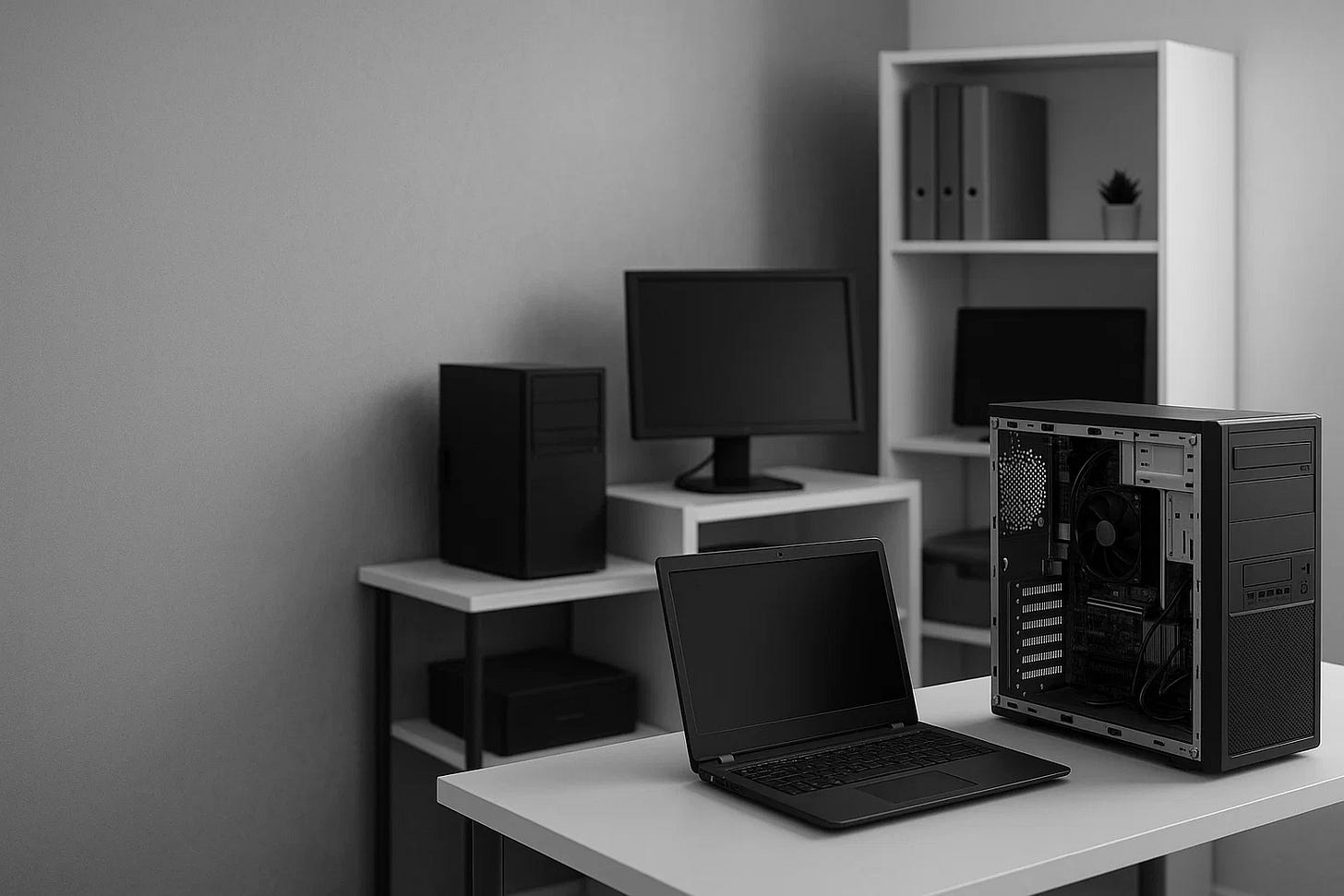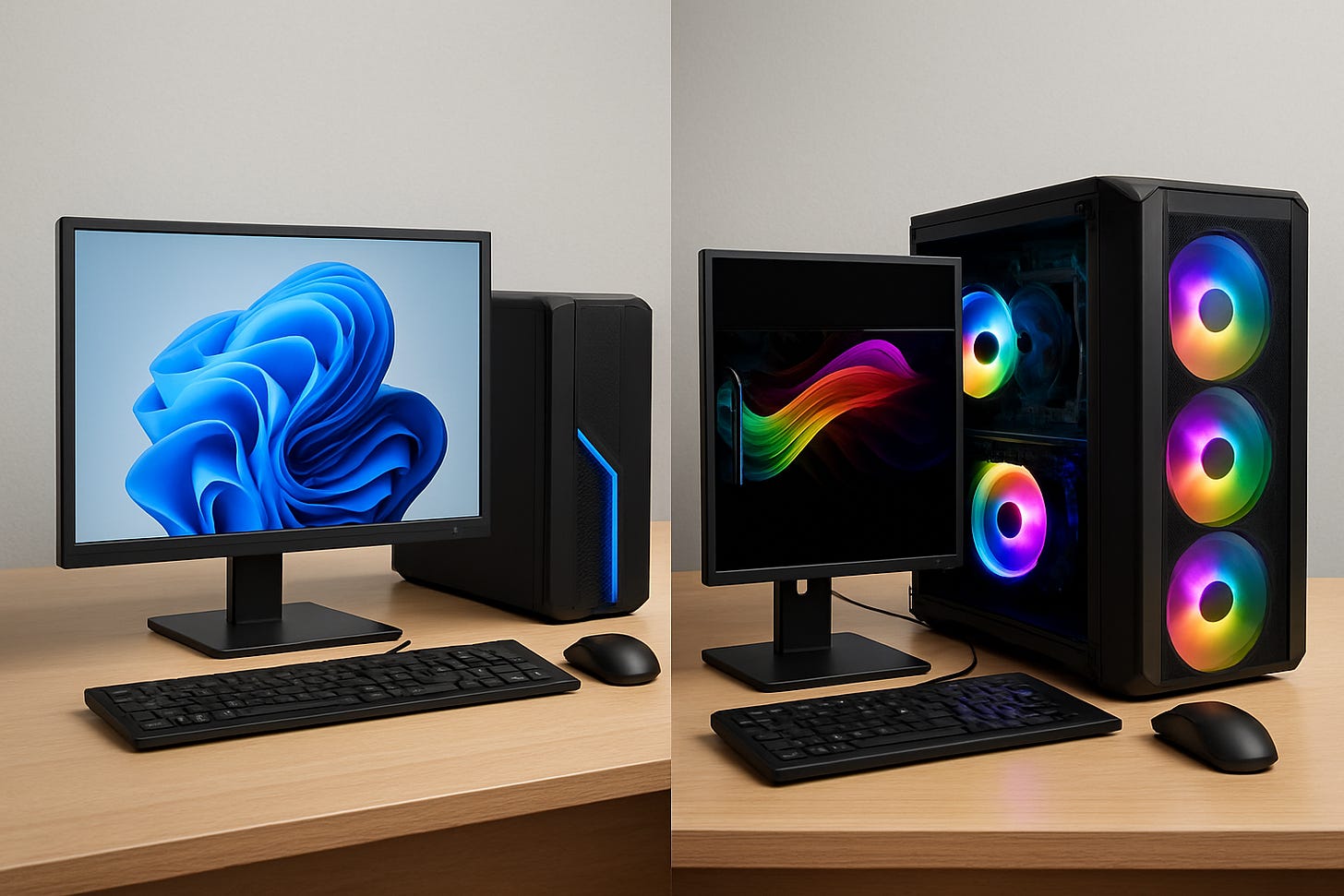Introduction: Why Configuration Matters in Video Editing
In the world of video editing and rendering, the performance of your PC can make or break your workflow. Whether you’re editing 4K footage, creating YouTube content, or producing professional ads, the right configuration ensures smooth playback, faster exports, and zero crashes during complex projects. Unlike general-purpose computers, video editing workstations require specific hardware tuned for demanding tasks like timeline scrubbing, color grading, and multi-layer compositing.
So, what exactly goes into a powerful editing PC? Let’s break it down.

Key Components That Power a Video Editing & Rendering PC
1. Processor (CPU): The Heart of Editing
When it comes to video editing, the CPU plays a major role in handling timelines, effects, and encoding.
- Ideal Choice: AMD Ryzen 9 or Intel Core i9 (12-core or higher)
- Why? Multi-core processors handle tasks like rendering and exporting more efficiently.
- Tip: For Adobe Premiere Pro, DaVinci Resolve, or Final Cut Pro (macOS), higher core count leads to smoother multitasking.
2. Graphics Card (GPU): Essential for Rendering & Real-Time Effects
The GPU accelerates effects, transitions, color grading, and rendering time. Especially for software like DaVinci Resolve, a strong GPU is critical.
- Recommended Models: NVIDIA RTX 4070 / 4080 or AMD RX 7900 XT
- VRAM Requirement: At least 8GB (more for 4K+ projects)
3. RAM (Memory): Keeping Your Workflow Fluid
A video editing PC requires plenty of RAM to handle large files, project previews, and multiple applications.
- Minimum: 32GB
- Optimal: 64GB or more for 4K/6K editing or heavy multitasking
- Tip: Choose DDR5 memory if your motherboard supports it for faster bandwidth.
4. Storage: Speed & Capacity Matter
Editing software frequently reads and writes data — so storage speed is critical.
- Primary Drive (OS & Software): 1TB NVMe SSD
- Scratch/Working Drive: Another NVMe SSD or SATA SSD (for project files)
- Archive/Backup: High-capacity HDD (2TB–8TB)
- Tip: Use a separate SSD for cache and preview files to reduce lag during playback.
5. Motherboard: Reliable, Feature-Rich Foundation
Make sure your motherboard supports your chosen CPU, GPU, and RAM capacity.
- Look For: High-speed M.2 slots, Thunderbolt/USB-C ports, and PCIe Gen 4 support.
- Example: ASUS ProArt or MSI Creator series motherboards.
6. Cooling & Power Supply: Keep It Stable
Video editing tasks generate heat and need power stability.
- Cooling: AIO liquid cooler or high-end air cooler
- Power Supply (PSU): 750W or higher, 80+ Gold rated
Optional but Important Add-ons
- Dual Monitors: For preview + timeline workspace
- Color-Accurate Display: IPS screen with 100% sRGB or Adobe RGB support
- Audio Interface: For content creators dealing with voiceover or music
- UPS: Protects from sudden power loss during renders
Sample Configurations (Tiered)
🔹 Intermediate 1080p Editing Build
- CPU: AMD Ryzen 7 7700X
- GPU: NVIDIA RTX 4060 Ti
- RAM: 32GB DDR5
- Storage: 1TB NVMe + 2TB HDD
- Purpose: YouTube, wedding films, short ads
🔸 Professional 4K Editing & Color Grading Build
- CPU: Intel Core i9-14900K
- GPU: NVIDIA RTX 4080
- RAM: 64GB DDR5
- Storage: 1TB NVMe (OS) + 2TB NVMe (scratch) + 4TB HDD
- Purpose: Film editors, agencies, production studios
Things to Avoid
- Using just HDDs: Slows down project loading and preview
- Low RAM (under 16GB): Causes freezes and long export times
- Entry-level GPUs (GTX series): Not ideal for modern video editing software
Future-Proofing Tips
- Leave headroom for RAM upgrades (choose 4-slot motherboards)
- Opt for a larger PSU if you might upgrade your GPU later
- Ensure your case has good airflow for future heat management
Software Optimization
- Premiere Pro: Prefers strong CPU + some GPU acceleration
- DaVinci Resolve: Heavy GPU usage (ideal for RTX 40 series)
- After Effects: Benefits from high RAM and fast disk cache

Conclusion: Build for the Software You Use
The ideal video editing PC is not just about raw power — it’s about balance. A strong GPU won’t help if your RAM is limited. Fast storage won’t matter if your CPU bottlenecks during playback. So, understand your software, match your configuration accordingly, and always aim for balance.
Whether you’re a solo content creator or part of a production team, investing in the right PC configuration will dramatically improve your efficiency, reduce render times, and make editing a pleasure instead of a pain.